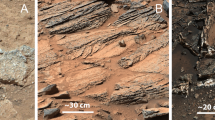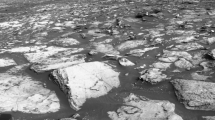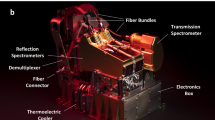Abstract
Modern large ground-based solar telescopes are invariably equipped with adaptive optics systems to enhance the high angular resolution imaging and spectroscopic capabilities in the presence of Earth’s atmospheric turbulence. The quality of the images obtained from these telescopes cannot be quantified with the Strehl ratio or other metrics that are used for nighttime astronomical telescopes directly. In this paper, we propose to use the root mean square (rms) granulation contrast as a metric to quantify the image quality of ground-based solar telescopes. We obtain semi-logarithmic plots indicating the correspondence between the Strehl ratio and the rms granulation contrast, for most practical values of the telescope diameters (\(D\)) and the atmospheric coherence diameters (\(r_{0}\)), for various levels of adaptive optics compensation. We estimate the efficiency of a few working solar adaptive optics systems by comparing the results of our simulations with the Strehl ratio and rms granulation contrast published by these systems. Our results can be used in conjunction with a plausible 50% system efficiency to predict the lower bound on the rms granulation contrast expected from ground-based solar telescopes.








Similar content being viewed by others
Data Availability
The authors received the simulated solar granulation images from another source (Prof. S. P. Rajaguru of the Indian Institute of Astrophysics) and therefore cannot share the same. The method of generation of phase screens has been described in detail in Unni. C et al. (2021) and can be used to reproduce the phase screens.
References
Berkefeld, T., Schmidt, D., Soltau, D., von der Lühe, O., Heidecke, F.: 2012, Astron. Nachr. 333, 863. DOI.
Calvo, F., Steiner, O., Freytag, B.: 2016, Astron. Astrophys. 596, A43. DOI.
Cao, W., Gorceix, N., Coulter, R., Ahn, K., Rimmele, T.R., Goode, P.R.: 2010, Astron. Nachr. 331, 636. DOI.
Deng, H., Zhang, D., Wang, T., Ji, K., Wang, F., Liu, Z., et al.: 2015, Solar Phys. 290, 1479. DOI.
Denker, C., Dineva, E., Balthasar, H., Verma, M., Kuckein, C., Diercke, A., et al.: 2018, Solar Phys. 293, 44. DOI.
Freytag, B., Steffen, M., Ludwig, H.-G., Wedemeyer-Böhm, S., Schaffenberger, W., Steiner, O.: 2012, J. Comput. Phys. 231, 919. DOI.
Fried, D.L.: 1966, J. Opt. Soc. Am. (1917-1983) 56, 1372.
Johnson, L.C., Johansson, E., Marino, J., Richards, K., Rimmele, T., Wang, I., et al.: 2020, SPIE Conf. Ser. 11448, 114480T. DOI.
Kiepenheuer, K.O.: 1964, Le choix des sites d’observatoires astronomiques (site testing) 19, 193.
Lutomirski, R.F., Woodie, W.L., Buser, R.G.: 1977, Appl. Opt. 16, 665. DOI.
Marino, J., Rimmele, T.: 2010, Appl. Opt. 49, G95. DOI.
Martinez, P., Kolb, J., Sarazin, M., Tokovinin, A.: 2010, Messenger 141, 5.
Noll, R.J.: 1976, J. Opt. Soc. Am. (1917-1983) 66, 207.
Padinhatteeri, S., Sridharan, R., Sankarasubramanian, K.: 2010, Solar Phys. 266, 195. DOI.
Parenti, R.R., Sasiela, R.J.: 1994, J. Opt. Soc. Am. A 11, 288. DOI.
Popowicz, A., Radlak, K., Bernacki, K., Orlov, V.: 2017, Solar Phys. 292, 187. DOI.
Rao, C., Zhu, L., Rao, X., Zhang, L., Bao, H., Kong, L., et al.: 2016, Astrophys. J. 833, 210. DOI.
Rimmele, T.R.: 2000, Adap. Opt. Sys. Tech. 4007, 218. DOI.
Roddier, F.: 1981, Prog. Opt. 19, 281. DOI.
Scharmer, G.B., Dettori, P.M., Lofdahl, M.G., Shand, M.: 2003, Innovative Telescopes and Instrumentation for Solar Astrophysics, Proc. SPIE 4853, 370. DOI.
Scharmer, G.B., Löfdahl, M.G., van Werkhoven, T.I.M., de la Cruz Rodríguez, J.: 2010, Astron. Astrophys. 521, A68. DOI.
Scharmer, G.B., Löfdahl, M.G., Sliepen, G., de la Cruz Rodríguez, J.: 2019, Astron. Astrophys. 626, A55. DOI.
Sridharan, R., Bayanna, A.R.: 2004, Telescopes and Instrumentation for Solar Astrophysics, Proc. SPIE 5171, 219. DOI.
Stewart, G.W.: 1993, SIAM Rev. 35, 551. DOI.
Tokovinin, A.: 2002, Publ. Astron. Soc. Pac. 114, 1156. DOI.
Unni. C, V., Rengaswamy, S., Ravindra, B., Prabhu, K.: 2021, Solar Phys. 296, 65. DOI.
Venkatakrishnan, P., Mathew, S.K., Srivastava, N., Bayanna, A.R., Kumar, B., Ramya, B., et al.: 2017, Curr. Sci. 113, 686. DOI.
Wang, J.Y.: 1977, J. Opt. Soc. Am. 67, 383. DOI.
Winker, D.M.: 1991, J. Opt. Soc. Am. A 8, 1568. DOI.
Acknowledgments
We would like to thank the referee for their helpful comments. We would also like to thank Prof. S. P. Rajaguru of the Indian Institute of Astrophysics for providing the solar granulation images which were used for the simulations. This research has made use of the High Performance Computing (HPC) resources (https://www.iiap.res.in/?q=facilities/computing/nova and https://www.iiap.res.in/facilities/computing/delphinus) made available by the Computer Center of the Indian Institute of Astrophysics, Bangalore.
Author information
Authors and Affiliations
Contributions
First and corresponding author did the simulation in Python with verbal guidance from second author. First author also generated all the plots. Both authors wrote and reviewed the manuscript together with a few iterations.
Corresponding author
Ethics declarations
Competing interests
The authors declare no competing interests.
Additional information
Publisher’s Note
Springer Nature remains neutral with regard to jurisdictional claims in published maps and institutional affiliations.
Rights and permissions
Springer Nature or its licensor (e.g. a society or other partner) holds exclusive rights to this article under a publishing agreement with the author(s) or other rightsholder(s); author self-archiving of the accepted manuscript version of this article is solely governed by the terms of such publishing agreement and applicable law.
About this article
Cite this article
Subramanian, S.K., Rengaswamy, S. Image Quality Specification for Solar Telescopes. Sol Phys 298, 15 (2023). https://doi.org/10.1007/s11207-022-02105-2
Received:
Accepted:
Published:
DOI: https://doi.org/10.1007/s11207-022-02105-2




